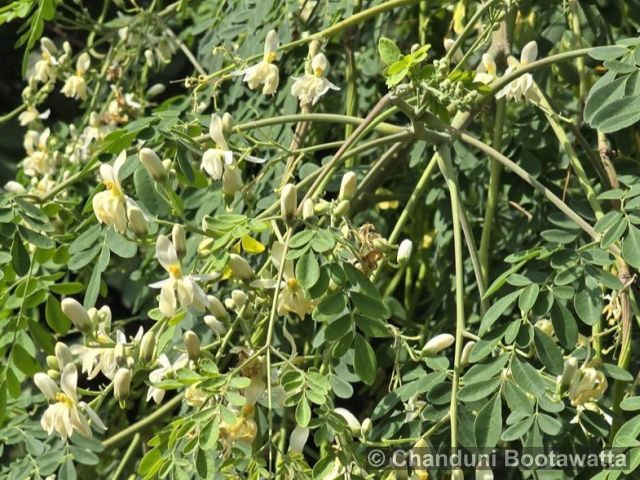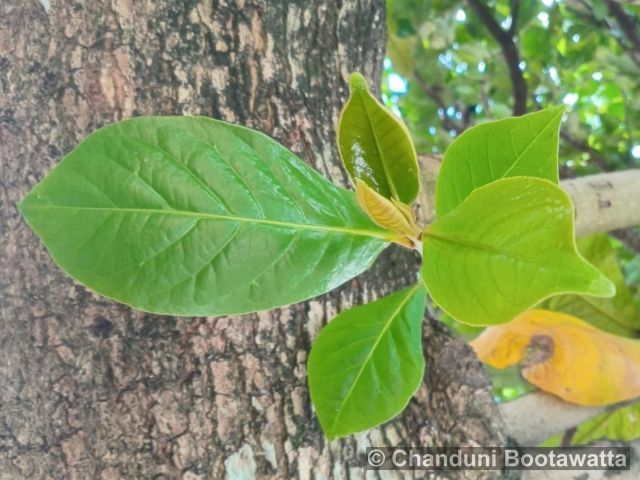Tento příspěvek byl přečten146krát!
horseradish tree, murunga
Syn.: Moringa moringa (L.) Millsp. Moringa pterygosperma Gaertner
Family: Moringaceae


Description: The tree has slender branches, a soft, whitish-grey trunk, and feathery, green leaves that are highly nutritious. Its flowers are small, fragrant, and white or cream-colored, often appearing in clusters. The buds of the Moringa tree are tender and edible, like the leaves. The tree produces long, slender, triangular seed pods known as drumsticks, which contain seeds that can be used to purify water.

Substitutions – Moringa stenopetala: Often referred to as the African Moringa, this species is similar in appearance to Moringa oleifera, with feathery leaves and similar drumstick-like seed pods. It is also highly nutritious and used in traditional medicine and cooking, particularly in East Africa. – Moringa drouhardii: Known as the bottle tree Moringa, this species is native to Madagascar. It has a distinct swollen trunk and similar leaves to Moringa oleifera, though its appearance is more unique due to its trunk shape. Like other Moringa species, it is valued for its nutritional and medicinal uses. – Moringa concanensis: Found in India and parts of Southeast Asia, this species closely resembles Moringa oleifera in terms of leaf structure and overall appearance. It is less common but still shares many of the same uses, including in traditional medicine and as a food source.


Ecology: Thrives in well-drained, sandy or loamy soils with a slightly acidic to neutral pH (6.0 to 7.0). It prefers warm temperatures between 25°C to 35°C (77°F to 95°F) and requires full sunlight for optimal growth. The tree is drought-resistant, needing minimal water once established, and can grow at altitudes up to 1,200 meters (3,937 feet). While it can tolerate a range of conditions, frost and prolonged cold can harm the tree.

General Distribution: Widely distributed across tropical and subtropical regions, including South Asia, Africa, Central and South America, and Southeast Asia.

Use: Moringa oleifera is valued for its medicinal properties and is widely used in traditional medicine, as well as in culinary dishes, for its nutrient-rich leaves, pods, and seeds.


Author of text and photos: Chanduni Bootawatta.
Photographed in Matale, Sri Lanka on 11/08/2024.



 Poslat emailem
Poslat emailem











